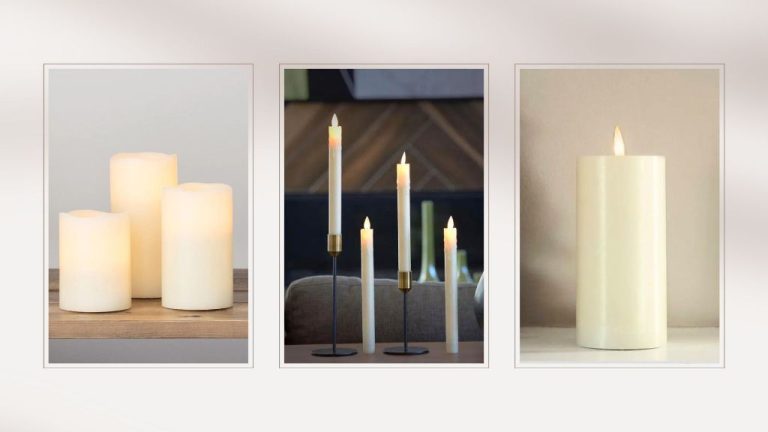Are Organic Candles Safe?
Organic candles have become increasingly popular in recent years as more consumers look for safer and more eco-friendly candle options. Unlike regular candles, organic candles are made without toxic chemicals, synthetic fragrances, artificial dyes, and paraffin wax. Instead, they use natural waxes like soy, beeswax, and vegetable-based waxes as the candle base, along with safer fragrance options like essential oils. While organic candles aim to provide a healthier alternative, some questions remain around whether they are completely risk-free and safe to burn indoors. This article will explore the potential benefits and risks of burning organic candles to help consumers make an informed decision.
What Makes a Candle Organic?
Organic candles are made with natural and organic ingredients that have minimal processing. The main components of an organic candle include:
Natural Waxes – Organic candles use waxes like soy, beeswax, or vegetable-based waxes instead of paraffin wax which is a petroleum byproduct. Natural waxes are biodegradable and renewable (source).
Essential Oils – Organic candles are scented with pure essential oils which are extracted from plants, fruits, and herbs. Essential oils provide natural aroma therapeutic benefits compared to synthetic fragrances (source).
Cotton Wicks – The wicks of organic candles are made of natural materials like cotton instead of lead or zinc core wicks. Cotton wicks burn cleaner and are compostable (source).
By using natural and unprocessed ingredients, organic candles aim to provide an eco-friendly and non-toxic alternative to regular candles.
Potential Benefits of Organic Candles
One of the main benefits of organic candles is that they may emit less soot into the air compared to regular candles. When paraffin, a petroleum byproduct commonly used in conventional candles, burns, it releases more soot particles that can dirty your home and are not good for your lungs if inhaled [1]. Organic candles made from natural waxes like soy, beeswax, or coconut burn cleaner and release less soot.
Organic candles are also made with more natural ingredients. Rather than paraffin, they use renewable and biodegradable waxes like soybean, palm, or beeswax. Natural candle waxes burn slower and cooler, meaning organic candles tend to have a longer burn time. The materials are also better for the environment when production waste and used candles are disposed of. Additionally, natural candle waxes can be safely composted or reused.
Organic candles often provide more customizable scent options as well. Essential oils or other natural fragrances can be used to create specific aromatherapy benefits or tailored scents. Without the petroleum smell of paraffin interfering, organic candle scents may smell more pleasant. You can find organic candles with energizing, relaxing, or uplifting aromas to match your mood or needs.
Potential Risks of Organic Candles
While organic candles are often marketed as a healthier alternative to regular candles, they still carry some potential risks. According to Healthline, burning any type of candle produces some soot emissions, even if minimal (https://www.healthline.com/health/are-candles-bad-for-you). Soot is made up of fine black particles that can accumulate on surfaces and be inhaled, posing respiratory risks. Though organic candles produce less soot than regular paraffin candles, burning them indoors over time could still lead to black residue buildup.

Organic candles also commonly contain essential oils and fragrances. While these can provide pleasant scents, Healthline reports that essential oils have been linked to allergic reactions and asthma symptoms in some people. Those with sensitivities may experience headaches, breathing issues, and skin irritation around organic scented candles (https://www.ncbi.nlm.nih.gov/pmc/articles/PMC9832800/). It’s important to be aware of any negative physical reactions when burning scented organic candles.
Finally, as with any open flame product, organic candles present a potential fire hazard if not used properly. It’s important to keep candles away from flammable materials, out of reach of children and pets, and never leave them unattended (https://www.thecut.com/article/best-natural-candles.html). Though made from natural wax, organic candles can still cause serious fire damage or burns if misused or tipped over. Following proper fire safety guidelines is essential when burning organic or any other type of candle.
Soot Emissions
A recent study published in Emissions of soot, PAHs, ultrafine particles, NOx, and other pollutants from stressed burning of modern candle types found that organic candles emitted lower levels of soot particles compared to paraffin candles. Soot particles from candle burning can contribute to indoor air pollution and have been linked to respiratory issues.
The researchers measured emissions from burning 5 types of pillar candles made from paraffin, stearin, beeswax, soy wax, and palm wax. They found paraffin candles emitted the highest levels of soot particles, followed by palm wax candles. Beeswax, soy wax, and stearin candles produced the lowest soot emissions.
Another study published in Measurement and evaluation of gaseous and particulate emissions from scented candles also found higher soot emissions from paraffin candles compared to soy wax. The soot particles generated are very small and can penetrate deep into the lungs.
The researchers recommend choosing candles made from organic waxes like soy, beeswax, or stearin to minimize soot production and exposure to fine particulate matter during burning.
Fragrance and Essential Oils
One key factor that determines whether a candle is organic or not is the type of fragrance used. Organic candles use natural plant-based essential oils for fragrance rather than synthetic fragrances.
While synthetic fragrances may be more affordable and offer consistent aroma, there are concerns over potential toxicity and allergenic effects especially for sensitive individuals. According to the National Candle Association, fragrances approved for candle usage do not release toxic chemicals whether they are synthesized or natural (Source).
However, natural essential oils are derived from plants and may be preferable for those with sensitivities. Organic candle brands avoid synthetic fragrances and use essential oils that are gentler on respiratory systems. It’s important to note that essential oils can still cause reactions in some people. Those with asthma or allergies should check ingredient lists carefully before burning any scented candle.
In summary, organic candles rely on natural essential oil fragrances rather than synthetic versions. While the safety of both types is debated, essential oils may be better tolerated by those sensitive to fragrances and artificial scents.
Wick Materials
Most organic candles use cotton wicks as they burn cleaner than other materials like paper or wood. Cotton wicks are made from natural, untreated cotton fibers that produce less soot during burning compared to synthetic materials like rayon or polyester (Organic Cotton Wicks). The cotton is often sourced from pesticide-free and sustainably-grown crops.
Properly trimming the wick before each lighting can also reduce excess soot and promote a cleaner burn. Most experts recommend trimming the wick to 1⁄4 inch before lighting to avoid issues. The wick should be trimmed as it burns down so the flame is just large enough to burn cleanly without producing excess smoke.
Using the manufacturer recommended wick type and size for each candle is also important for safety. Oversized wicks can create tall, sooty flames while undersized wicks can tunnel into the wax and cause the candle to burn unevenly. Consult the labeling to ensure the right wick for each organic candle.
Fire Safety
One of the most important considerations with any candle, organic or not, is fire safety. According to the National Fire Protection Association (NFPA), over 11,000 fires per year in the United States are started by candles, resulting in significant property damage and injuries (NFPA). Proper precautions are essential when burning any candle.
The NFPA and other fire safety organizations like the U.S. Fire Administration provide tips for safe candle usage (U.S. Fire Administration, NFPA). Key recommendations include:
- Keeping candles at least 12 inches from anything that can burn, including curtains, furniture, bedding, paper, etc.
- Never leaving a burning candle unattended. Extinguish candles before leaving a room.
- Keeping candles out of reach of children and pets.
- Using sturdy, nonflammable candle holders.
- Avoiding drafts, vents, or air currents around candles.
- Burning candles in a well-ventilated room.
- Extinguishing candles before going to sleep.
Following basic fire safety rules like supervision and containment is critical no matter if a candle is organic or not. Proper precautions can help prevent injuries and property damage.
Eco-Friendly Factors
When evaluating the eco-friendliness of organic candles, there are a few key factors to consider:
Biodegradability – Organic candles made from natural waxes like soy, beeswax, and vegetable-based waxes will biodegrade much faster than those made from paraffin wax. Paraffin is a petroleum byproduct that can take thousands of years to break down. Natural waxes decompose within 1-5 years (source).
Sourcing – Opt for candles using renewable and sustainably-sourced ingredients. Beeswax and soy wax come from renewable sources. Make sure palm wax is sourced sustainably as palm oil production is linked to deforestation (source).
Carbon Footprint – Natural wax candles have a smaller carbon footprint compared to paraffin. Paraffin production and shipping relies heavily on fossil fuels. Locally-made candles also reduce emissions from transportation (source).
Overall, natural organic candles made with renewable, biodegradable waxes are better for the environment. But sustainability also depends on responsible sourcing and production methods.
Conclusion
In summary, when used properly organic candles can provide some benefits over conventional candles, but they also come with some potential risks to be aware of.
The main benefits of organic candles are that they are made with more natural waxes and oils, produce less soot, and avoid harsh chemical fragrances. This makes them appealing for those looking to avoid toxins and pollutants in their homes.
However, any candle still carries fire risks if not used cautiously. Organic candles are often unregulated, so quality and contents can vary. Some “natural” waxes or oils may still cause issues for sensitive individuals. There are also concerns over emissions from the burning of essential oils or other organic ingredients.
When using organic candles, look for reputable brands that disclose all ingredients. Follow proper fire safety protocol and monitor candles when burning. Ventilate rooms well and extinguish candles if emissions become bothersome. Those with sensitivities may wish to double check all ingredients. Ultimately, organic candles can be a safer option than conventional candles when used mindfully, but risks cannot be fully eliminated.



